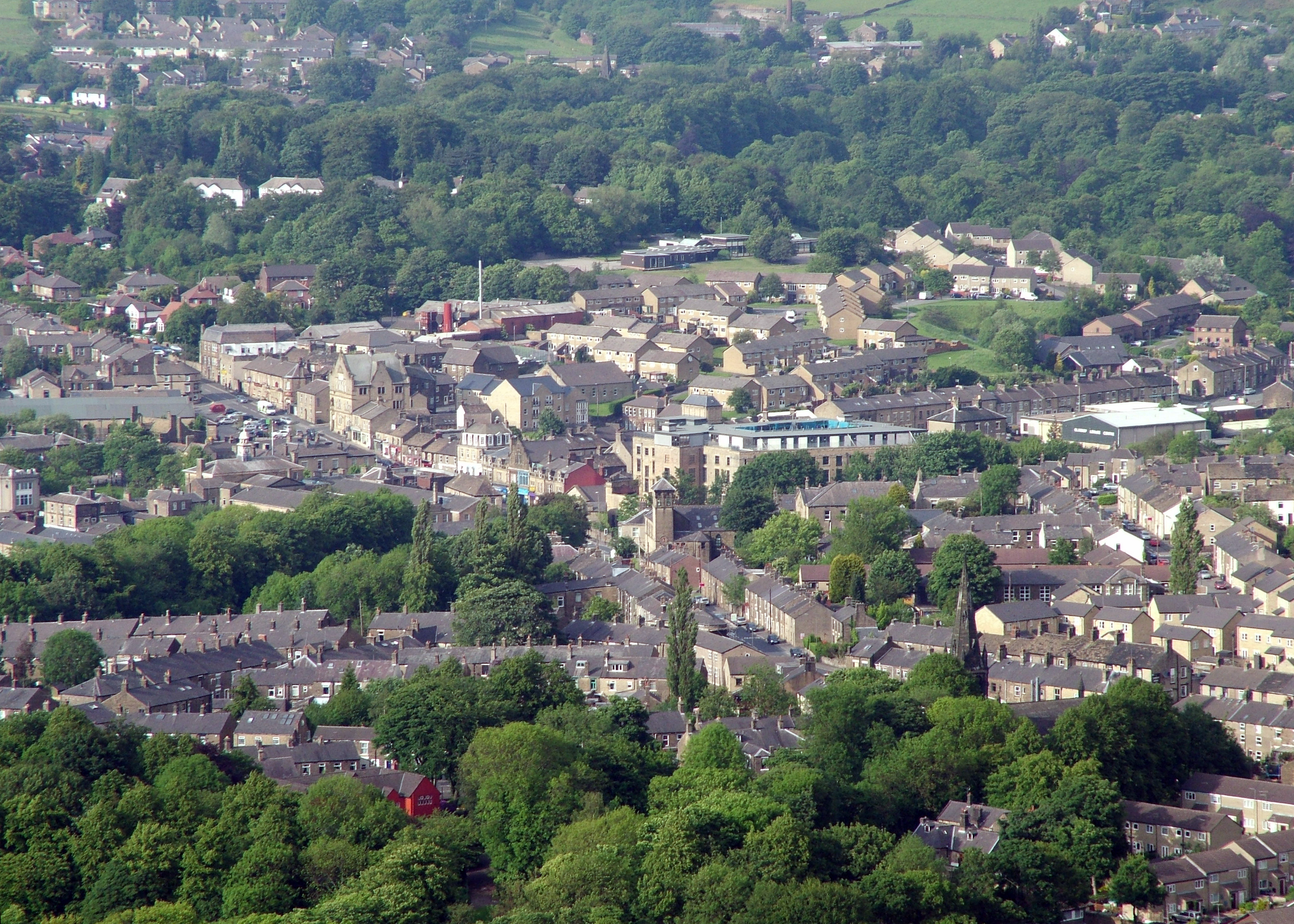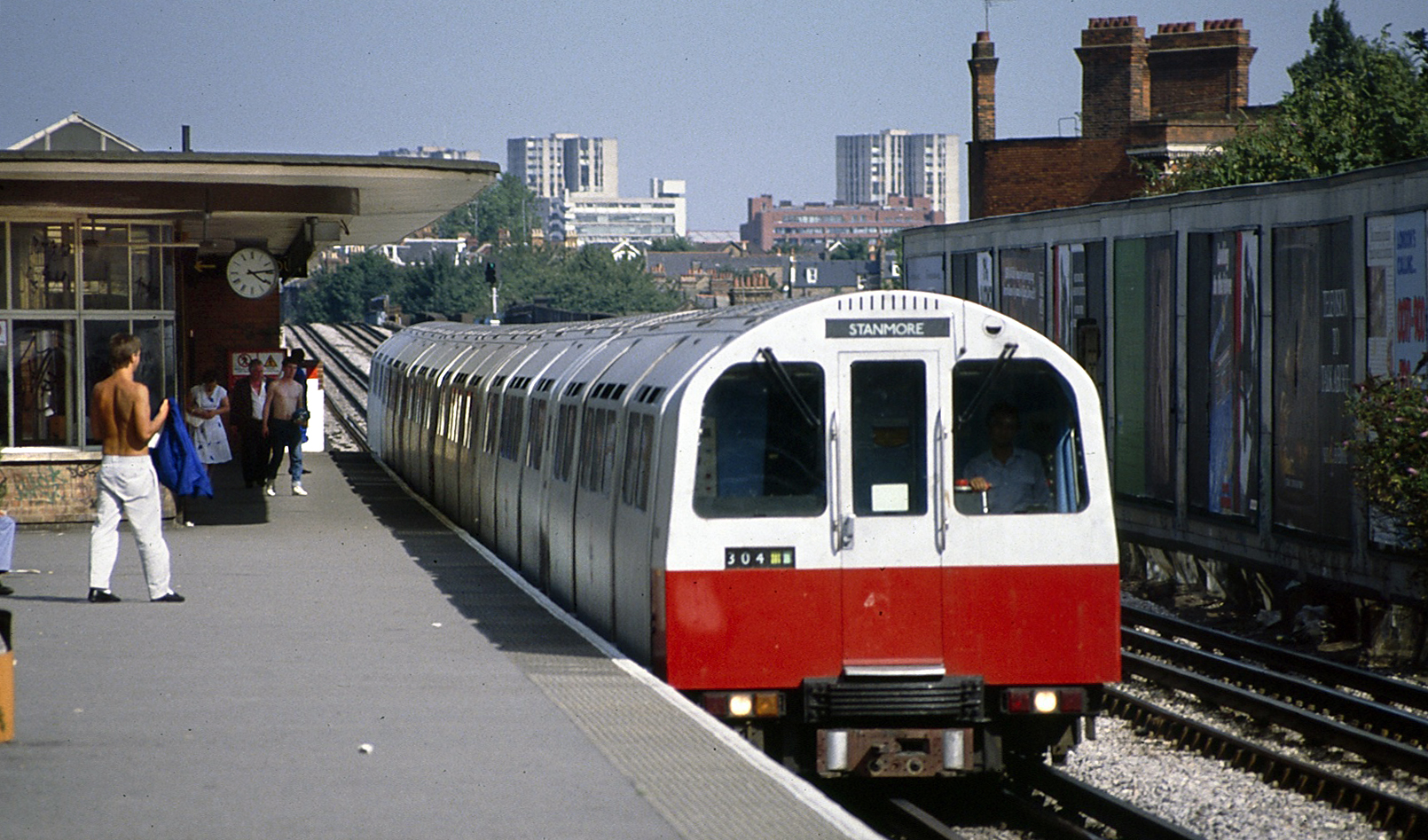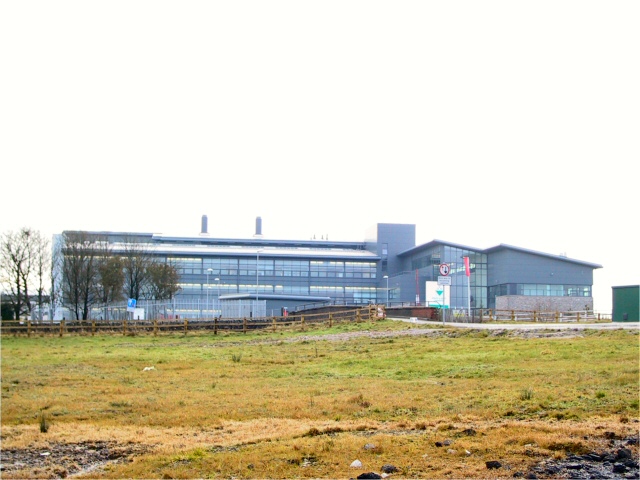|
Harpur Hill
Harpur Hill is a small village on the outskirts of Buxton, Derbyshire, England. It is in the Cote Heath ward of the High Peak Borough Council. It has a primary school, a park, a pub, a working men's club and a Methodist church. From 1938 to 1969, the RAF Maintenance Unit 28 was based at Harpur Hill and it included the RAF Mountain Rescue Team for the Peak District. RAF Harpur Hill was established as an underground munitions store. Tunnels were dug out to house munitions and ordnance. When the RAF left the tunnels were used as a mushroom farm. When the tunnels closed they were sold to a group of local businessmen and used as a cold store for cheese; a warehouse was built for dry and bonded wines and spirits. A number of local hauliers provided the transport for these goods. One of the hauliers was Lomas Distribution which was bought out by Christian Salvesen and was a major employer in the area; it later sold the site to French transport company Norbert Dentressangle. Many ... [...More Info...] [...Related Items...] OR: [Wikipedia] [Google] [Baidu] |
High Peak, Derbyshire
High Peak is a Local authority district, local government district with borough status in Derbyshire, England, covering a high moorland plateau in the Dark Peak area of the Peak District National Park. The district stretches from Holme Moss in the north to Sterndale Moor in the south, and from Hague Bar in the west to Bamford in the east. The population of the borough taken at the 2011 Census was 90,892. The borough is unusual in having two administrative centres for its council, High Peak Borough Council; the offices are in Buxton and Glossop. Other towns include Chapel-en-le-Frith, Hadfield, Derbyshire, Hadfield, New Mills and Whaley Bridge. High Peak was the name of a Hundred (county division), hundred of the Historic counties of England, ancient county of Derbyshire covering roughly the same area as the current district. It may have derived its name from the ancient Forest of High Peak, a royal hunting reserve administered by William Peverel, a favourite of William I of En ... [...More Info...] [...Related Items...] OR: [Wikipedia] [Google] [Baidu] |
RAF Harpur Hill
RAF Harpur Hill is a former Royal Air Force station, situated at Harpur Hill near Buxton, Derbyshire in England. The site was operational from 1938 to 1960 and was mainly used as an underground munitions storage facility. It became the largest ammunitions dump in the country across the site. History During World War I, Frith artillery range was located on the site. In 1938 the Air Ministry bought Harpur Hill Quarry from ICI. A totoal of 11 tunnels were built (concrete galleries covered by waste quarry stones) and dug into the hillside from 1938 to 1940 by McAlpine (at a cost of £6,500,000) to house munitions (ammunition and weapons) and ordnance (bombs and explosives) during World War II. The small entrance leads into one main tunnel, which used to have a railway track running along its length, with three side tunnels branching off on each side. These tunnels are wide, high and over half a mile long. The tunnels were constructed below ground level to withstand enemy bombi ... [...More Info...] [...Related Items...] OR: [Wikipedia] [Google] [Baidu] |
Villages In Derbyshire
A village is a human settlement or community, larger than a hamlet but smaller than a town with a population typically ranging from a few hundred to a few thousand. Although villages are often located in rural areas, the term urban village is also applied to certain urban neighborhoods. Villages are normally permanent, with fixed dwellings; however, transient villages can occur. Further, the dwellings of a village are fairly close to one another, not scattered broadly over the landscape, as a dispersed settlement. In the past, villages were a usual form of community for societies that practice subsistence agriculture and also for some non-agricultural societies. In Great Britain, a hamlet earned the right to be called a village when it built a church.-4; we might wonder whether there's a point at which it's appropriate to talk of the beginnings of French, that is, when it wa ... ''village'', from Latin ''villāticus'', ultimately from Latin ''villa'' (English ''villa''). Ce ... [...More Info...] [...Related Items...] OR: [Wikipedia] [Google] [Baidu] |
Far Hill Quarry
Harpur Hill Quarry is a disused limestone quarry on Harpur Hill, Derbyshire, England. Limestone was extracted there from 1835 to 1952 for lime burning at lime kilns to produce quicklime. The quarry was used by the Royal Air Force (as part of RAF Harpur Hill) as a chemical weapons storage depot during the Second World War, the largest such depot in the United Kingdom. Afterwards a number of captured German chemical munitions were disposed of at the site by burning, which was only partially successful. The RAF depot closed in 1960 and the site is now vacant. A small part of the abandoned quarry has flooded to become a quarry lake. Its water has a very high pH, that is, it is very alkaline, owing to the presence of caustic chemicals that are leaching from the waste left from the lime burning. The lake water has a vivid blue colour due to the scattering of light by finely dispersed particles of calcium carbonate. Despite signs warning of the health risks the lake became a popul ... [...More Info...] [...Related Items...] OR: [Wikipedia] [Google] [Baidu] |
7 July 2005 London Bombings
The 7 July 2005 London bombings, also referred to as 7/7, were a series of four co-ordinated suicide attacks carried out by Islamist terrorists that targeted commuters travelling on Transport in London, London's public transport during the morning rush hour. Three terrorists separately detonated three homemade bombs in quick succession aboard London Underground trains in Inner London. Later, a fourth terrorist detonated another bomb on a double-decker bus in Tavistock Square. The train bombings occurred on the Circle line (London Underground), Circle Line near and at Edgware Road tube station (Circle, District and Hammersmith & City lines), Edgware Road, and on the Piccadilly Line near . Apart from the bombers, 52 people of 18 different nationalities were killed and nearly 800 were injured in the attacks. It was the UK's deadliest terrorist incident since the 1988 bombing of Pan Am Flight 103 near Lockerbie, and the UK's first Islamist suicide attack. The explosions were ... [...More Info...] [...Related Items...] OR: [Wikipedia] [Google] [Baidu] |
Jubilee Line
The Jubilee line is a London Underground line that runs between in suburban north-west London and in east London, via the West End of London, West End, South Bank and London Docklands, Docklands. Opened in 1979, it is the newest line on the Underground network, although some sections of track date back to 1932 and some stations to 1879. The western section of the line between and was previously a branch of the Metropolitan line until 1939 and later a branch of the Bakerloo line until 1979, while the newly built line was completed in two major sections: initially in 1979 to , then in 1999 with Jubilee Line Extension, an extension to Stratford. The later stations are larger and have special Jubilee Line Extension#Design, safety features, both aspects being attempts to Future proofing, future-proof the line. Following the extension to east London, serving areas once poorly connected to the Underground, the line has seen a huge growth in passenger numbers and is the fourth-busi ... [...More Info...] [...Related Items...] OR: [Wikipedia] [Google] [Baidu] |
Health And Safety Laboratory
The Health and Safety Laboratory (HSE Laboratory or HSL Buxton) is a large 550-acre research site in rural High Peak, Derbyshire, south of Buxton. It researches new methods in industrial safety. It provides training courses in subjects such as Control of Major Accident Hazards Regulations 2015 (COMAH) and DSEAR (Dangerous Substances and Explosive Atmospheres Regulations, 2002). History It started out as the Safety in Mines Research Establishment (SMRE) in 1947. The Safety in Mines Research Board had been formed in 1921, and it bought the site in Harpur Hill in 1924. It researched work into safety of mining. Other research laboratories for mining safety had been opened in 1928 in Sheffield. At the SMRE in 1956, Herbert Eisner discovered how high-expansion foam can put out fires. The Occupational Medicine Laboratory opened in London in 1959, and this merged with the site in Derbyshire to form the Health and Safety Executive's (HSE) Research and Laboratory Services Division (RL ... [...More Info...] [...Related Items...] OR: [Wikipedia] [Google] [Baidu] |
Norbert Dentressangle
Norbert Dentressangle () was a major European transport, logistics and freight forwarder. It was founded in 1979, initially concentrating on cross channel transport between France and the United Kingdom. In December 2007, Norbert Dentressangle doubled its size, and significantly strengthened its position in Europe, with the acquisition of Christian Salvesen, and in March 2011, it bought the British company TDG. The company reported proforma revenues of €3.8 billion for 2012. In July 2014, Norbert Dentressangle announced that it would be acquiring Jacobson Companies, a United States-based third-party logistics Third-party logistics (abbreviated as 3PL, or TPL) is an organization's long-term commitment of outsourcing its distribution services to third-party logistics businesses. Third-party logistics providers typically specialize in integrated opera ... provider, for $750 million. Norbert Dentressangle operated from 500 sites in 20 European countries, and at one time emp ... [...More Info...] [...Related Items...] OR: [Wikipedia] [Google] [Baidu] |
Christian Salvesen
Christian Salvesen was a Scottish whaling, transport and logistics company with a long and varied history, employing 13,000 staff and operating in seven countries in western Europe. In December 2007, it was acquired by France, French listed transport group Norbert Dentressangle. History Salve Christian Frederik Salvesen (1827–1911) was born in Mandal, Norway, Mandal, Vest-Agder, Norway. Christian Salvesen was the son of Norwegian merchant shipowner, Thomas Salvesen (1787–1853). In 1846, his older brother Johan Theodor Salvesen (1820–1865) had gone into the partnership of Turnbull, Salvesen and Company with George W. Turnbull and established an affiliate office in Leith near Edinburgh, Scotland. The oldest brother, Carl Emil Salvesen (1816–1877) also moved to Leith but his role in the company is unclear. Christian Salvesen joined the partnership after migrating from Mandal in 1851. He lived and operated from 20 Charlotte Street in Leith (now known as Queen Charlotte St ... [...More Info...] [...Related Items...] OR: [Wikipedia] [Google] [Baidu] |
Peak District
The Peak District is an Highland, upland area in central-northern England, at the southern end of the Pennines. Mostly in Derbyshire, it extends into Cheshire, Greater Manchester, Staffordshire, West Yorkshire and South Yorkshire. It is subdivided into the Dark Peak, moorland dominated by gritstone, and the White Peak, a limestone area with valleys and gorges. The Dark Peak forms an arc on the north, east and west of the district, and the White Peak covers central and southern areas. The highest point is Kinder Scout (). Most of the area is within the Peak District National Park, a protected landscape designated in 1951. A 2021 report states that "the Park's own population numbers around 40,000 and supports an estimated 18,000 jobs, predominantly through farming, manufacturing and, inevitably, tourism". The area has been inhabited since the Mesolithic era; it was largely used for agricultural purposes until mining arose in the Middle Ages. During the Industrial Revolution, seve ... [...More Info...] [...Related Items...] OR: [Wikipedia] [Google] [Baidu] |
Derbyshire
Derbyshire ( ) is a ceremonial county in the East Midlands of England. It borders Greater Manchester, West Yorkshire, and South Yorkshire to the north, Nottinghamshire to the east, Leicestershire to the south-east, Staffordshire to the south and west, and Cheshire to the west. Derby is the largest settlement, and Matlock is the county town. The county has an area of and a population of 1,053,316. The east of the county is more densely populated than the west, and contains the county's largest settlements: Derby (261,400), Chesterfield (88,483), and Swadlincote (45,000). For local government purposes Derbyshire comprises a non-metropolitan county, with eight districts, and the Derby unitary authority area. The East Midlands Combined County Authority includes Derbyshire County Council and Derby City Council. The north and centre of Derbyshire are hilly and contain the southern end of the Pennines, most of which are part of the Peak District National Park. They include Kinde ... [...More Info...] [...Related Items...] OR: [Wikipedia] [Google] [Baidu] |







